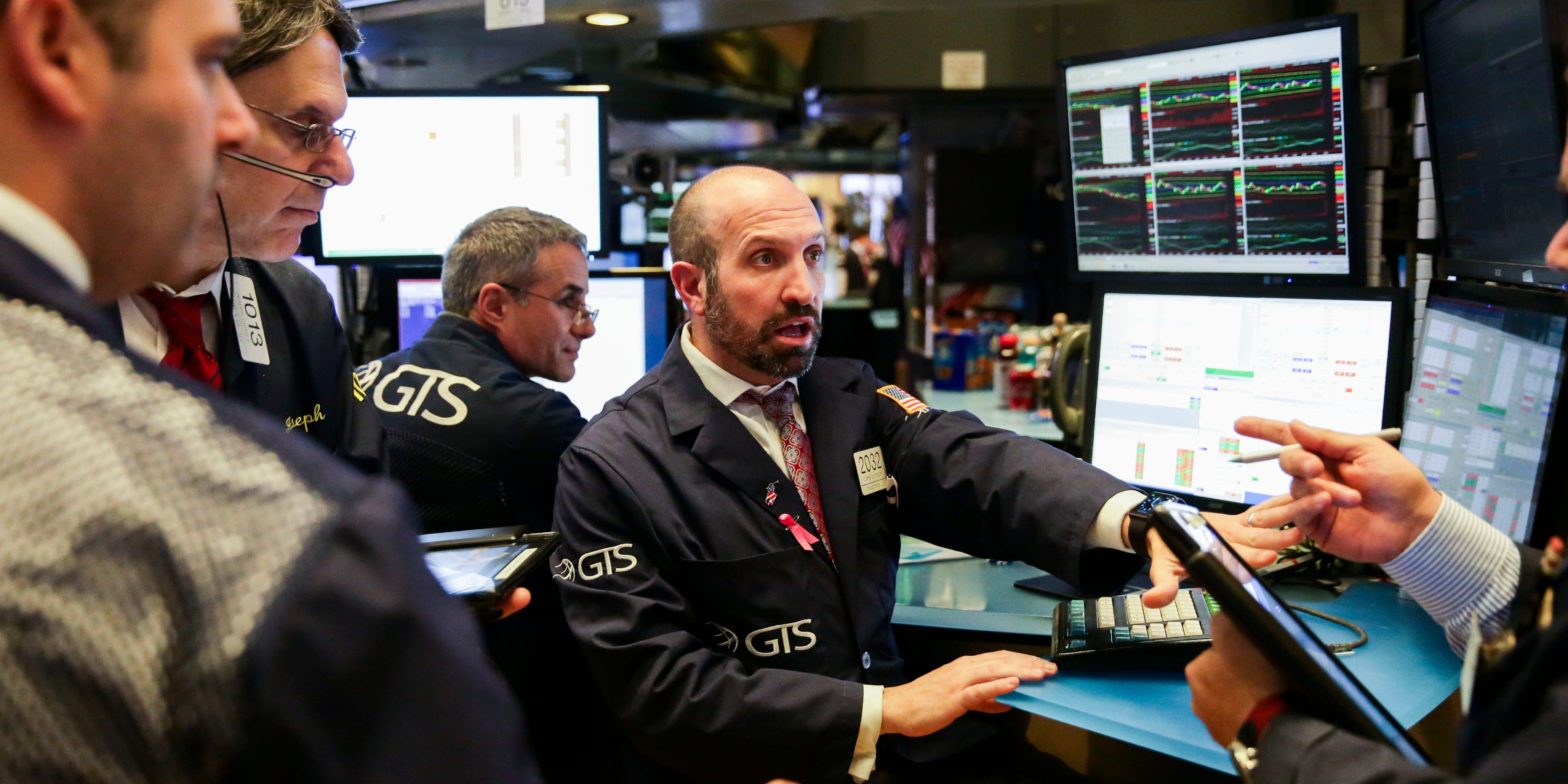The S&P 500 is vulnerable to losing another 8% in the short term, said Barclays in a note Tuesday. The index dipped back into correction territory Tuesday, but valuations remain above pre-pandemic levels. Barclays held on to a target of 4,800 for the broad index by year-end. Sign up here for our daily newsletter, 10 Things Before the Opening Bell. The S&P 500 remains vulnerable to extending its already steep losses for 2022, making it too early for investors to buy into the stock market sell-off triggered largely by the Federal Reserve’s “hard pivot” toward aggressive monetary tightening, according to Barclays.
Barclays still held on to its year-end price target of 4,800 for the S&P 500 but said risks are skewed to the downside in the short term.
The S&P 500 staged a stunning rebound on Monday but slumped back into correction territory Tuesday as selling resumed.
“Using the pre-pandemic valuations as rough gauge there is still ~8% downside potential to SPX with more pain for higher valuation stocks,” said Maneesh Deshpande, head of US equity strategy at Barclays, in a note published Tuesday. “Another floor is provided by the Fed put which will likely only be activated after a ~20% broader risk selloff based on the 2001 and 2018 experience.”
The Fed put refers to the idea that the US central bank will respond to stock-market distress by enacting policies that will result in a bounceback for equities.
“After spending much of 2021 counseling patience that the bout of inflation will be transitory, toward the end, the Fed did a hard pivot to a more hawkish stance,” leading investors to price in four interest-rate hikes for this year, said Deshpande. Those expectations are slightly more aggressive than what the Fed’s so-called dot plots had indicated at its December meeting.
Historically, the start of a Fed rate-hike cycle hasn’t knocked equities out of rallies, with post-hike positive returns underpinned by continued strength in corporate earnings, said the bank.
In fact, the S&P 500 has posted, on average, returns of about 6% in the year following a rate hike, it added.
“This time it could be different. Firstly, current valuations are still elevated relative pre-pandemic levels,” said Deshpande, noting the traditional index price-to-earnings ratio and the median P/E were each roughly 8% above levels seen before the start of the COVID-19 pandemic in 2020.
Secondly, the strong earnings growth after the coronavirus crisis unfolded has been driven by an “extraordinary binge” in goods consumption and could face headwinds if it reverts to a pre-pandemic trend.
“Finally, the Fed faces a tricky balance between not falling behind the curve in curbing inflation and a potential growth patch due to Omicron, especially as China continues to follow a zero-tolerance policy amidst a self-induced credit slowdown,” Barclays said.
Deal icon An icon in the shape of a lightning bolt. Keep reading
More: MI Exclusive Stock Market Outlook 2022 Stocks s&p 500 Chevron icon It indicates an expandable section or menu, or sometimes previous / next navigation options.
